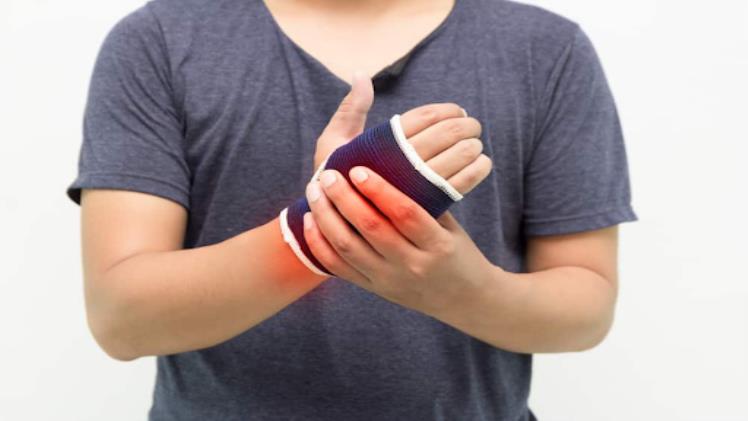5 Ways to Reduce Swelling From an Injury

Swollen injuries result from regular household or work accidents you experience when you fall or dislocate your joints while running, walking, or playing sports. They are uncomfortable and limit your movement, so you get stuck limping around or take an involuntary rest to reduce the swelling and allow for proper healing.
Traditional treatment methods like wrapping the injured part, icing the swellings with veggies or homemade ice packs, applying over-the-counter topical ointments, or using popularly prescribed medications are mostly used to treat swollen injuries at home. However, these traditional treatment methods do not offer proper and immediate healing to the swelling. Instead, let us take you through five better ways to reduce swelling from an injury.See all information about mbc 2030
Ways to Reduce Swelling From an Injury
While it might seem like a perfect idea to suck it up and go about your day, ignoring your injuries does not confer immediate healing to the swollen and injured joint. Ensure you follow one or more of the following trusted ways to reduce swelling from an injury.
-
Ice packs or Cold Therapy (Cryotherapy)
The use of Cold Compress for Swelling has been in use for a long time. Cold slows blood flow, reduces inflammation and pain, and is suited for short-term sprains and strains. Ice packs on injuries are a recommended homecare treatment guaranteed to reduce swelling. When you press cold veggie packs on your wound at home, you also practice Cryotherapy.
While homemade ice packs reduce swelling effectively, high-quality ice packs from trusted companies can provide twice the soothing effect within a short time. Ice packs from trusted brands like Hampton Adams have been used to relieve swelling and pain in musculoskeletal conditions like runner’s knee, tendonitis, sprains and strains, and even pain and swelling after a hip or knee replacement.
How Do Ice Packs Reduce Swelling?
Swelling is a body reaction to excess force or pressure mounted on the joint or tendon, forcing it to snap or move beyond its normal range of movement. Reusable Ice Packs for Injuries help narrow the engorged blood vessels so that blood begins to flow slowly around the inflamed injury. Ice packs have been known to reduce the skin’s temperature and the surrounding blood nerves’ activities, which helps reduce pain and swelling.
Why should I use Hampton Adams Ice Pack?
Hampton Adams is a brand that produces quality sports products and has the trust of several sports athletes, many families, and medical professionals. Our ice packs are high-quality products that offer maximum comfort to sporting, workplace, and household-related injuries.
- Comfort
Hampton Adams Reusable Ice Pack are ultra-comfy freezing gels that provide constant cooling, allow for comfort during cooling, and are flexible enough to be placed on any body part. This feature supersedes other brands of ice packs made with stiff and uncomfortable freezing gels that continually poke the skin and do not allow for flexible use due to their size and shape.
- Safe and Goo-Free
Hampton Adams has another edge over other ice packs by being safe to use on all skin types. It can be quite challenging to deal with the dripping fluid from the constantly melting ice cubes on your skin as you risk getting frostbites; however, Hampton Adams ice packs are built to last while providing comfort. The ice packs are in packages sealed to prevent the leakage of goos or fluids on your skin, so you enjoy using our ice packs everywhere you go.
- Maximum Relief for a Long Time
Ice packs are designed to provide relief, and at Hampton Adams, we have repeatedly ensured our high-quality ice packs deliver this promise.
- Lastly, our Icepack is reusable!
2. Compression
Compression is another way to reduce swelling from an injury. This is simply done by using a compression bandage to wrap the injured part. Compression bandages can be in different forms; however, they come in the form of stretchy materials wrapped around the injury to mount pressure. This reduces swelling by constricting blood flow.
Compression bandages are typically used to relieve sprains and strains and help keep a fractured joint in place.
How Does Compression Reduce Swelling?
You may have seen many athletes wear super tight-fitting bandages on their arms or ankles and wonder why. These materials are called compression bandages that help reduce swelling and soreness, treat medical conditions, promote muscle healing, and in several cases, enhance their performance.
Compression bandages apply the correct amount of pressure to the swelling on the specific area it is wrapped, minimizing the amount of fluid that will gather around the injury site. This provides relief and temporary support and disperses the fluid back into the body.
Why Should I Use Hampton Adams Compression Bandages?
Hampton Adams compression bandages are another high-quality product that provides the needed comfort. Our bandage contains outstanding features that cannot be found in drugstore compression bandages, putting us high above other brands.
- Comfortable
Our bandage gives your knees, ankles, and muscles the compression they need for healing. Popular medical professionals and athletes use them for their ease as they stay on the skin easily without causing any discomfort.
- Unique Compression Weaves for Extra Stability
We have crafted a unique compression bandage with advanced compression weaves that were specifically designed to allow the bandage to stay on your skin even when you perform strenuous physical activities.
- Advanced Fastener
The metallic pin fasteners of older compression bandages were uncomfortable as they either poked your skin many times or failed to keep the wrapped bandage in place. To relieve this issue, Hampton Adams created a hook and loop fastener designed with movement and physical activity in mind. The new fastener is different and does not require you to reposition them constantly.
3. Medications
Medications can also help reduce swelling. They are those drugs we rush to find in the first aid box because their chemical components provide the needed relief that will help reduce pain or swelling. These kinds of medications are called Non-steroidal anti-inflammatory drugs (NSAIDs), and some examples include aspirin or ibuprofen. NSAIDs are popular and can be bought easily at drug stores or supermarkets.
Why Should I Use NSAIDs?
NSAIDs contain various properties that are good for relieving pain. When we take one or more of these medications, they block the production of specific body chemicals known to cause inflammation in the injury. They work like corticosteroids but do not have the same side effects as these steroids. Overall, they are good at providing temporary relief by treating pain and inflammation that often come with joint and muscle injuries.
4. Topical Ointments
Topical ointments are one of the ways to reduce swelling in injuries. They work like medications but are slightly different as they only affect the area in which they are applied. Unlike medicines that work on all of the body, topical ointments work on a specific site, and once the skin absorbs them, they relieve pain and reduce swelling around the joints and muscles.
Why Should I Use Topical Ointments?
The treatment or comfort you receive depends on your choice of ointments. When you apply a pain relieving cream to the area of pain or swelling, the skin absorbs the medication, and the constituents begin to act on the skin. Many creams contain salicylates as they are significant constituents of oral medicines like aspirin and ibuprofen.
Compared to oral medications that require the bloodstream and other biological breakdowns, topical ointments work immediately by targeting the area of pain and swelling. Since they target the joint directly, topical ointments are well-suited for joints. In addition, using topical ointments reduces the number of chemicals in your body, and you are also less likely to be affected by the side effects of oral medications.
5. Elevation
As simple as it sounds, elevating your leg can significantly reduce your swollen injury. The elevation is another painless way to reduce swelling, requiring you just to raise your legs. Before elevation, ensure other treatments and products listed above have been applied as elevation alone may not lessen the swelling.
Why Should I Elevate My Injury?
Elevating your injury above your heart level, that is, raising the injured part above your heart, pushes or recirculates the fluid that pools around the injury. If you can’t raise the injured part above your heart, try and raise it near your heart or close to it, as the essence of elevation is to disperse the fluid responsible for the engorged size of the injury.




